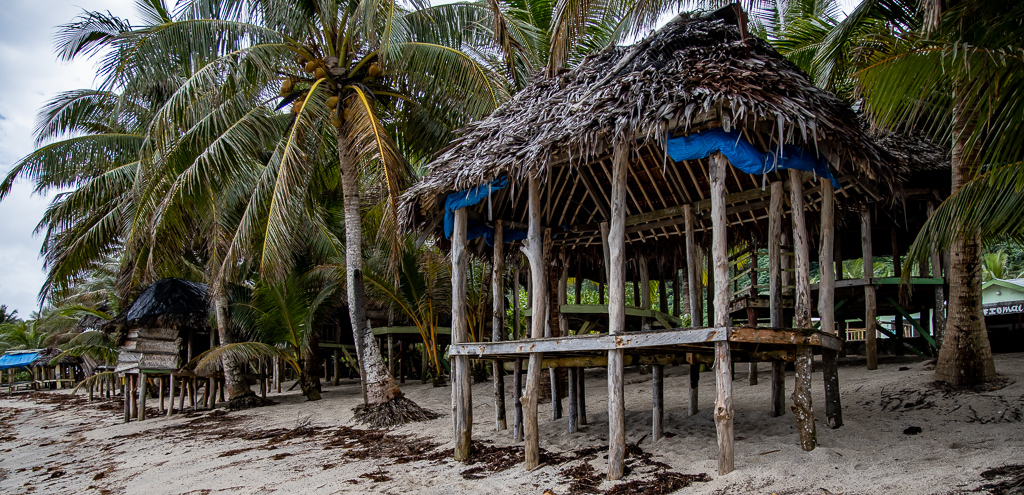Samoa records third negative consecutive growth
 By Adel Fruean
•
04 January 2021, 11:00AM
By Adel Fruean
•
04 January 2021, 11:00AM
Samoa has recorded the third negative consecutive growth which is the lowest the economy has experienced in over a decade.
The country’s economic performance was highlighted in a quarterly economic review issued by the Ministry of Finance, which summarised the state of the economy during the fourth quarter of 2019/20 (April to June 2020) and the annual review (July 2019 to June 2020).
According to the report, in terms of Samoa’s Gross Domestic Product (GDP), the reviewing quarter marks the third negative consecutive growth and the lowest the economy experienced over a decade.
The economy dropped by 11.6 per cent to stand at $453.3 million when compared to the same quarter of the previous financial year 2018/19.
“It is obvious that this adverse impact was primarily due to the COVID-19 pandemic which affected the country following the measles epidemic in the second quarter of the reviewing financial year,” read the report.
The report also added that the negative growth was mainly fuelled by constraints in accommodation and restaurants (-86.0 per cent), other manufacturing (-50.2 per cent), constructions (-38.5 per cent), food and beverages (-29.6 per cent), fishing (-29.5 per cent), transport (-20.8 per cent) and transport (-19.9 per cent).
Furthermore, the overall financial year 2019/20, G.D.P. at constant prices declined by 3.5 per cent when compared to the previous financial year ending June 2020.
In addition, the negative growth was attributed to the measles and the COVID-19 pandemic impact. However, the adverse impacts were cushioned by the positive impact of the Pacific Games which boosted the first quarter of the reviewing financial year.
The main industries that contributed negatively to the overall economic performance of the country include: fishing (-20 per cent), accommodation and restaurants (-17.3 per cent), business services (-14.4 per cent), food and beverages (-11.6 per cent), other manufacturing (-10.5 per cent), construction (-8.9 per cent) and transport (-8.6 per cent).
On the contrary, communication, financial services and agriculture Industries grew positively by 7.7 per cent, 4.9 per cent and 2.2 per cent respectively.
The report also noted that the total number of formal paid employment stood at 24,358 at the end of June 2019/20 quarter which represented a decline by 0.3 per cent (75 employees) compared to the same quarter of 2018/19.
This downward trend was mainly caused by a huge decrease in the tertiary sector: accommodations (-26.6 per cent), restaurants (-3.0 per cent), personal service (-4.3 per cent) and other services (-0.9 per cent).
This decline reflects the negative impacts experienced by the country in employment opportunities and job losses due to ongoing global effects of COVID-19 pandemic. The primary, secondary and public administration sector recorded a slight growth in employment numbers by 2.6 per cent, 0.7 per cent and 0.9 per cent respectively.
On the other hand, the total commodity exports amounted to $28.51 million for the June quarter of FY2019/20. This reflects a 9.8 per cent decrease when compared to the June quarter of FY2018/19. The decrease reflected is due to a drop in the majority of Samoa’s major exporting goods which include: coconut oil, nonu fruit, spring water, nonu juice, scrap metal, coconut cream, beer, domestic exports, cigarettes, kava, fresh fish and coconuts.
The total commodity of imports also dropped by 31.4 per cent in the reviewing quarter when compared to the same quarter of the previous financial year to stand at $160.8 million.
This is the second consecutive quarter whereby both exports and imports have recorded decreasing trends. Again, this is a reflection of the impacts of the COVID-19 pandemic, states the report, where it has positioned the Government to strictly monitor its budget by importing mainly the necessity items needed while at the same time, the level of exports are being limited by strict lockdown and trading regulations in Samoa’s overseas markets.
The current account balance registered a surplus of $16.1 million in the reviewing quarter, increasing by 240.6 per cent when compared to the same quarter of the previous financial year. This surplus came as a result of increase in the amounts recorded for balance on goods, services and primary (up by 8.1 per cent) and balance on secondary income (up by 14.8 per cent) over the comparable quarter of the previous financial year.
Similarly, the capital account also went up by 90.6 per cent from the previous June quarter FY2018/19 to stand at $50.35 million in the June quarter FY2019/20. This rise was driven by increases in both capital account credit and capital account debit. The financial account registered a deficit of $50.0 million due to a fall in direct investment (net) and other investments (net). The deficit for the reviewing quarter is a 697.6 per cent drop from the previous June quarter of FY2018/19.
On a twelve months comparison basis (from July 18–June 19 to July 19–June 20), both exports and imports decreased by 2.4 per cent and 6.7 per cent respectively and thus decreasing the balance of trade in goods by 7.4 per cent. The current account balance increased by 7.3 per cent as a result of an increase in the balance on secondary income.
The capital account similarly increased by 69.3 per cent to arrive at a surplus amount of $109.72 million. In summary, the overall balance of payments on an annual basis ending June 2020 stood at $3.90 million. This reflects a 472.6 per cent increase when compared to the twelve months period of Jul18-Jun19.
As for tourism and remittances: tourist arrivals for the reviewing quarter recorded a massive decrease of 100 per cent (zero tourist arrivals as of the end of June Quarter) when compared to the previous quarter.
 By Adel Fruean
•
04 January 2021, 11:00AM
By Adel Fruean
•
04 January 2021, 11:00AM







